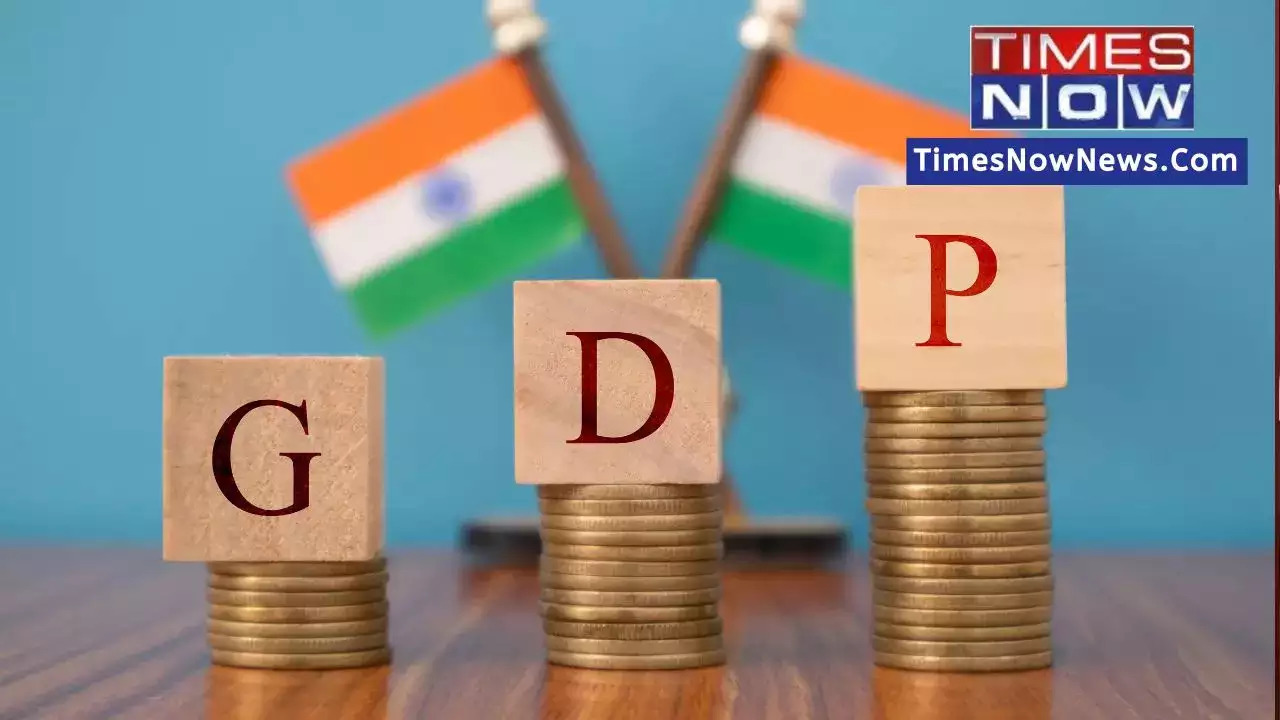Trending:
India's Economic Ascent: A Positive Outlook for 2024 and Beyond
The IMF has revised India's GDP growth forecast for FY24 to 6.8 percent, an increase from forecasts in January 2024. However, for FY26, the IMF anticipates a slight slowdown in economic growth to 6.5 percent, which is the same as the January estimate.

India is the world's fastest-growing major economy.
By Deepshikha Kumar:
India's economic story is one of remarkable resilience and burgeoning promise. Despite facing headwinds on the global stage, the country is projected to witness robust growth in 2024, solidifying its position as a major player in the global economic landscape. This optimism is echoed by leading international institutions and rating agencies, painting a bright picture for the year ahead.
Growth Momentum: Strong Foundations
India is the world's fastest-growing major economy. The Reserve Bank of India (RBI) raised its FY24 growth forecast to 7%, citing stronger-than-expected growth in the first two quarters. This led other agencies to adjust their forecasts upward. S&P Global now projects 6.8% growth for FY25, while the Asian Development Bank (ADB) raised its estimate to 7%. The World Bank, in its latest Global Economic Prospects report, forecasts India's GDP to grow at a commendable 6.6% in 2024. These revisions reflect India's robust economic momentum and positive outlook for the coming years. This growth is fueled by several key factors, including:
● Robust Domestic Demand: A large and growing middle class, coupled with rising disposable incomes, is driving domestic consumption, a vital pillar of the Indian economy. This growing consumer base presents a significant opportunity for businesses catering to a variety of needs. Fitch, Barclays, and other rating agencies have updated India's GDP growth projection for FY24 to 7.8 percent, citing robust domestic demand and ongoing growth in business and consumer confidence.
● Favorable Demographics: India boasts a young and rapidly growing population, a significant demographic dividend. Over half of India's population is under 25 years old, and over 65% is under 35 years old. This translates into a large and skilled workforce, ready to contribute to the country's economic expansion. Effective skilling initiatives can further enhance the employability of this young population.
● Government Initiatives: The Indian government's focus on infrastructure development, digitalization, and reforms like the Production Linked Incentive (PLI) scheme are expected to further stimulate economic activity. The PLI scheme incentivizes domestic manufacturing in specific sectors, fostering import substitution and export growth.
Thus, the International Monetary Fund (IMF) shares this optimistic view, revising India's GDP growth forecast for 2024-25 upwards to 6.8%. “Growth in India is projected to remain strong at 6.8 per cent in 2024 (FY25) and 6.5 per cent in 2025 (FY26), with the robustness reflecting continuing strength in domestic demand and a rising working-age population,” the IMF said in its report. The IMF has revised India's GDP growth forecast for FY24 to 6.8 percent, an increase from forecasts in January 2024. However, for FY26, the IMF anticipates a slight slowdown in economic growth to 6.5 percent, which is the same as the January estimate. This revision highlights the IMF's confidence in India's ability to navigate global challenges and maintain its remarkable growth trajectory. The strong domestic demand is a major driver behind this upward revision, showcasing the resilience of the Indian economy.
Emerging Sectors: Propelling India Forward
While traditional sectors like agriculture and manufacturing will continue to play a crucial role, India's growth story in 2024 and beyond is being shaped by the rise of exciting new sectors:
● Electric Vehicles (EVs): India is actively promoting the adoption of EVs to address environmental concerns and reduce dependence on fossil fuels. The government's FAME-II scheme offers subsidies and incentives to boost EV manufacturing and sales, creating significant investment opportunities in this sector. A report by McKinsey & Company estimates that the Indian EV market could reach a staggering $300 billion by 2030, signifying the immense potential of this sector.
● Semiconductors: The global chip shortage highlights the importance of self-sufficiency in semiconductor manufacturing. In response, India has initiated the "India Semiconductor Mission 2023," aiming to attract investment and build domestic capabilities. With semiconductor demand exceeding USD 10 billion and a vibrant chip design industry, India is positioning itself as a major player in the sector. The Centre of Excellence in Nanoelectronics at the Indian Institute of Science, Bangalore, and the Indian Institute of Technology, Bombay, reflect India's R&D prowess in VLSI and chip design.
● Renewable Energy: India is aggressively pursuing renewable energy, focusing on solar and wind power. This growing market for clean energy is attracting significant investments, aiding the country's sustainable development goals and reducing its carbon footprint. India aims to cut the carbon intensity of its economy by 45% by 2030 and achieve net-zero emissions by 2070. The goal is to have 500 GW of renewable energy capacity by 2030, with a 50% cumulative electric power target from renewables. India also plans to produce 5 million tonnes of green hydrogen by 2030, supported by 125 GW of renewable energy capacity. The country has approved 50 solar parks totaling 37.49 GW, and has set a target of 30 GW for offshore wind energy by 2030, with identified potential sites.
● Electronics Manufacturing: India's electronics manufacturing sector is projected to grow 15% in 2024, reaching USD 115 billion. This growth is driven by a greater focus on higher value-addition through component production and product development. Mobile phone manufacturing, a key segment, was expected to exceed USD 50 billion by March 2024, up from USD 42 billion in the previous financial year. According to government data, domestic electronics manufacturing has grown more than fourfold in the last decade, from Rs 1,80,454 crore (USD 29.8 billion) in FY14 to Rs 8.22 lakh crore (USD 102 billion) today. This growth underscores the robust prospects for India's electronics industry in 2024.
● Defence: The FY 2024-25 budget aligns with the Long-Term Integrated Perspective Plan (LTIPP), addressing critical gaps in the Armed Forces through modernization. The Rs 1.72 lakh crore allocation marks a 20.33% increase over last year, targeting new technology like Fighter Aircraft and Drones. A Rs 1.5 lakh crore naval ship-building investment could generate Rs 2.73 lakh crore.
● Healthcare and Pharmaceuticals: India's growing population and rising healthcare awareness are fueling demand for quality medical services and pharmaceuticals. The government's initiatives to improve healthcare infrastructure and access to affordable medications are creating a conducive environment for growth in this sector. This, coupled with India's strong presence in generic drug manufacturing, positions the country to become a global leader in the healthcare space. India's growing pharmaceutical industry can cater to both domestic and international markets.
Challenges and Considerations
While the outlook for India's economy in 2024 is positive, there are challenges that need to be addressed to ensure sustained growth. These include:
● Inflation: Rising global commodity prices pose a risk to inflation in India. The Reserve Bank of India (RBI) is expected to take measures to control inflation, potentially impacting economic growth in the short term. Effective monetary policy management will be crucial in tackling inflation while ensuring economic stability. .
● Geopolitical Tensions: The ongoing global conflicts can disrupt supply chains and lead to higher import costs for India. This necessitates diversifying trade partners and strengthening domestic production capabilities. Reducing dependence on any single supplier will be crucial in mitigating the impact of geopolitical tensions. The finance ministry however rensures that, “There are headwinds like indications of hardening crude oil prices and global supply chain bottlenecks to trade. Nonetheless, India, on the whole, looks forward to a bright outlook for FY25.”
Strategies for Continued Success
To capitalize on its growth potential and navigate these challenges, India can focus on the following strategies:
● Skilling and Education: Equipping the young workforce with the necessary skills to thrive in the evolving job market is crucial. Investing in education and skilling initiatives can ensure a steady pipeline of talent for emerging sectors like EVs and semiconductors.
● Innovation and R&D: Fostering a culture of innovation and research & development (R&D) is essential for India to become a global leader in high-tech sectors. Encouraging public-private partnerships and creating a supportive ecosystem for innovation will be key drivers of long-term growth.
● Ease of Doing Business: Streamlining regulations and simplifying business processes can attract more foreign investment and stimulate domestic entrepreneurship. The government's ongoing efforts to improve the ease of doing business will be crucial in this regard.
● Infrastructure Development: Continued investment in infrastructure development, including transportation, logistics, and digital infrastructure, will create a strong foundation for economic growth. This will improve connectivity, enhance efficiency, and unlock the full potential of various industries.
● Sustainability: Integrating environmental considerations into development plans is essential. Promoting green technologies and sustainable practices will ensure long-term economic growth without compromising the environment.
Conclusion
India's economic outlook for 2024 and beyond is bright. With a strong domestic foundation, a focus on emerging sectors, growth in existing sectors, and a commitment to addressing challenges, the country is poised for continued growth. As India takes center stage in the global economic landscape, its success story will be one to watch closely. By implementing the strategies outlined above, India can solidify its position as a major economic power and emerge as a leader in innovation and sustainability.
(Deepshikha Kumar, an Indian entrepreneur, is the founder-director of SpeakIn and is currently based in Singapore)
Trending:
End of Article
Subscribe to our daily Newsletter!
Related News





Why History Will Judge Joe Biden Kindly As A Pragmatic American Leader

Guru Purnima Special: How to Recognise Your Guru? Sadhguru Explains

Myanmar – The Elephant In The Room For ASEAN And India

Bharatiya Nyaya Sanhita 'Not A Welcome Change', Implemented Without Discussion: Amartya Sen

Travelling With The Indian Cricket Team And Living The Dream; Experience Of A Lifetime







